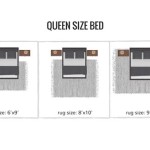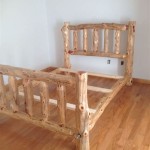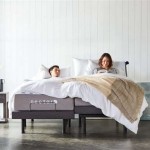Are Bunk Beds Dangerous in Earthquakes?
Bunk beds, with their elevated sleeping surfaces, have long been a popular choice for maximizing space in bedrooms, especially for families with multiple children. However, when considering the potential impact of an earthquake, the safety of these structures comes into question. The potential hazards associated with bunk beds during seismic events warrant a thorough investigation to ensure the well-being of those using them.
The primary concern surrounding bunk beds during earthquakes is the risk of falling from a significant height. As the earth trembles, objects within a structure, including furniture, can be thrown around, posing a serious threat of injury. Bunk beds, due to their elevated position, are particularly vulnerable to this danger. The upper bunk, in particular, can experience greater instability during an earthquake, causing significant damage and potential for catastrophic falls.
Risk of Falling from Bunk Beds During Earthquakes
In the event of an earthquake, the shaking can dislodge the bunk bed from its anchoring points, causing it to topple over. The weight of the bed frame, mattress, and occupants can exacerbate this instability. The elevated position of the upper bunk significantly amplifies the risk of falling. The impact from a fall can result in severe injuries, such as fractures, concussions, and internal bleeding. The force of the fall can also cause the bed frame to break or detach from the wall, further increasing the danger.
The risk of falling is particularly pronounced for children, who are often lighter and may have difficulty holding on during an earthquake. Furthermore, young children may be more susceptible to panic and confusion during an earthquake, making it difficult for them to react quickly and safely. The heightened risk of injury from falling underscores the need for caution when utilizing bunk beds in earthquake-prone regions.
Impact of Earthquake Shaking on Bunk Bed Stability
The intensity and duration of an earthquake play a significant role in determining the severity of the danger posed by bunk beds. Stronger earthquakes, with more violent seismic waves, are more likely to cause substantial damage to furniture, increasing the risk of toppling bunk beds. Even moderate earthquakes can create enough instability to dislodge the bed from its anchoring points, leading to a fall. The duration of the shaking also influences the risk, as a longer-lasting earthquake can lead to more significant movement and instability.
The design of the bunk bed itself can also contribute to its stability during an earthquake. Bunk beds with sturdy frames, secure anchoring points, and a low center of gravity are more likely to withstand the forces of an earthquake. However, older or poorly constructed bunk beds may be more susceptible to toppling, increasing the risk of injury. It is crucial to ensure that the bunk bed is securely anchored to the wall to minimize its movement during an earthquake.
Alternative Sleeping Arrangements for Earthquake Safety
Given these potential risks, it is essential to consider alternative sleeping arrangements in earthquake-prone regions. For families with young children, prioritizing their safety by avoiding bunk beds altogether is a prudent decision. Single beds, placed away from windows and heavy objects, offer a safer sleeping environment during earthquakes. These beds are less likely to topple over and pose a lower risk of falls.
If the use of bunk beds is unavoidable, it is essential to take precautions to mitigate the associated risks. Securely anchoring the bunk bed to the wall is crucial to prevent it from toppling over. Additionally, ensuring the bed frame is strong and well-maintained is essential to ensure its stability during an earthquake. It is also essential to teach children about earthquake safety, including how to stay calm and avoid unnecessary movement during an earthquake.
Ultimately, prioritizing safety during earthquakes is paramount. While bunk beds can provide space-saving benefits, the potential risks associated with them in earthquake-prone regions should be carefully considered. Alternative sleeping arrangements, alongside preventive measures for existing bunk beds, can help mitigate the dangers and ensure the well-being of individuals during seismic events.

Stanford S Earthquake Precautions Diverge From Some Standards

Earthquake Proof Beds Could Save Your Life And Give You Nightmares

Pros And Cons Of Bunk Beds Stuff Co

Pros And Cons Of Bunk Beds Stuff Co

Can Bunk Beds Collapse Are Safe
Are Metal Bunk Beds Safe For Children Quora

Pros And Cons Of Bunk Beds Stuff Co

Bunk Bed Earthquake Fastening System Safe T Proof

Pros And Cons Of Bunk Beds Stuff Co

Bunk Bed Earthquake Fastening System Safe T Proof







